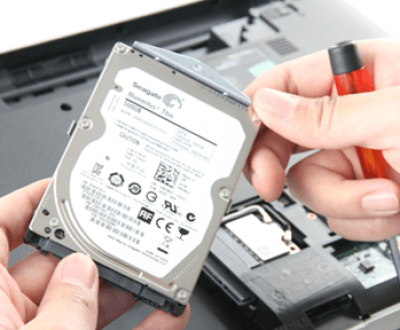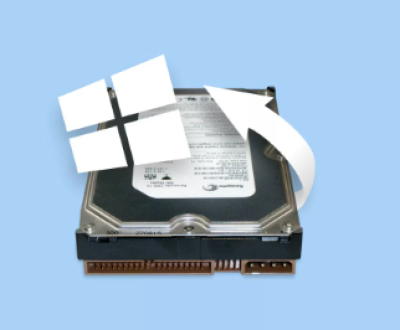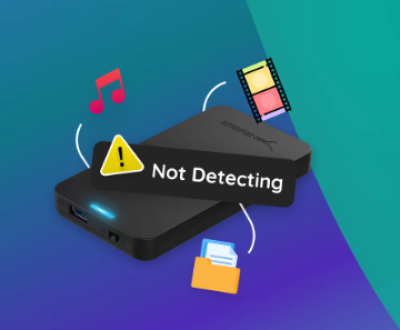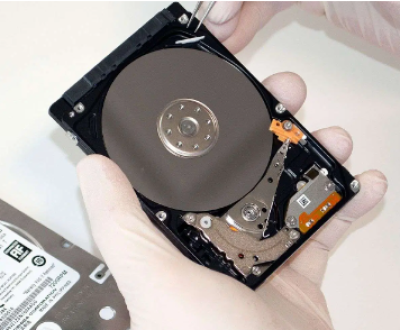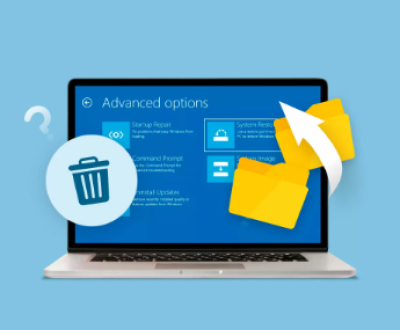They offer a convenient and portable way to store, transfer, and share data such as documents, photos, videos, and more. However, data loss from USB flash drives is a common occurrence, and it can be caused by various factors such as accidental deletion, formatting, physical damage, virus attacks, and file system corruption. The good news is that there are many free data recovery tools available that can help you recover lost data from your USB flash drive.
Causes of Data Loss from USB Flash Drives
Accidental Deletion
One of the most common causes of data loss from USB flash drives is accidental deletion. This can happen when you accidentally delete a file or folder while trying to organize your data or when you press the “Delete” key without realizing it. Once a file is deleted from a USB flash drive, it is not immediately removed from the storage device. Instead, the space occupied by the file is marked as available for new data to be written over it. This means that if you do not write any new data to the USB flash drive after the deletion, there is a good chance that you can recover the deleted file using a data recovery tool.

Formatting
Formatting a USB flash drive erases all the data on the device and resets the file system. This can happen accidentally when you select the wrong drive during the formatting process or when you intentionally format the drive to fix a file system error. Formatting a USB flash drive does not physically destroy the data on the device. Instead, it removes the file allocation table (FAT) or the master boot record (MBR), which are used to keep track of the files and folders on the drive. As long as the data has not been overwritten by new data, it is possible to recover the lost data using a data recovery tool.
Physical Damage
Physical damage to a USB flash drive can also cause data loss. This can happen if the drive is dropped, exposed to water, or subjected to extreme temperatures. Physical damage can cause the internal components of the drive to malfunction or become damaged, making it impossible to access the data on the drive. In some cases, physical damage may be repairable, but it is often a complex and expensive process. If the physical damage is severe, it may be necessary to replace the drive and try to recover the data using a data recovery service.
Virus Attacks
Virus attacks are another common cause of data loss from USB flash drives. Viruses can infect a USB flash drive when it is connected to an infected computer or when it is used to transfer data from an infected device. Once a virus infects a USB flash drive, it can corrupt the files and folders on the drive, delete important data, or even make the drive inaccessible. To prevent virus attacks, it is important to keep your antivirus software up to date and to scan your USB flash drive regularly for viruses and malware.
File System Corruption
File system corruption can occur when there is a problem with the file system on a USB flash drive. This can happen due to improper removal of the drive, power outages, or software conflicts. When the file system is corrupted, the computer may not be able to read or write to the drive, and the data on the drive may become inaccessible. In some cases, file system corruption can be fixed using built-in tools such as CHKDSK in Windows or Disk Utility in Mac OS. However, if the corruption is severe, it may be necessary to use a data recovery tool to recover the lost data.
Types of Free Data Recovery Tools
Software-Based Data Recovery Tools
Software-based data recovery tools are programs that can be installed on your computer to recover lost data from a USB flash drive. These tools work by scanning the drive for deleted or lost files and attempting to recover them. There are many free software-based data recovery tools available, such as Recuva, TestDisk, and PhotoRec. These tools are easy to use and can recover a wide range of file types, including documents, photos, videos, and more.
Online Data Recovery Tools
Online data recovery tools are web-based services that allow you to recover lost data from a USB flash drive without having to install any software on your computer. These tools work by uploading the data from your USB flash drive to the online server and then using the server’s resources to scan and recover the lost data. Some online data recovery tools are free, while others require a fee. Online data recovery tools are convenient for users who do not want to install software on their computer or who do not have the necessary technical skills to use software-based data recovery tools.
Hardware-Based Data Recovery Tools
Hardware-based data recovery tools are devices that can be used to recover lost data from a USB flash drive. These tools work by connecting the USB flash drive to the device and then using the device’s built-in software to scan and recover the lost data. Hardware-based data recovery tools are more expensive than software-based or online data recovery tools, but they are often more effective in recovering data from physically damaged drives. Some examples of hardware-based data recovery tools include the Ontrack EasyRecovery Professional and the R-Studio.
Steps Involved in the Data Recovery Process
Step 1: Stop Using the USB Flash Drive
The first step in the data recovery process is to stop using the USB flash drive immediately. Once you realize that you have lost data from the drive, do not write any new data to the drive. Writing new data to the drive can overwrite the lost data, making it impossible to recover.
Step 2: Choose a Data Recovery Tool
Panda Assistant Data Recovery is a powerful software tool designed to help users retrieve lost, deleted, or inaccessible data from various storage devices. It supports a wide range of storage media, including hard disk drives (HDDs), solid – state drives (SSDs), USB flash drives, memory cards, and even external hard drives. This versatility makes it suitable for both individual users and businesses.
One of the key features of Panda Assistant Data Recovery is its user friendly interface. Even those with limited technical knowledge can easily navigate through the software. The process typically starts with selecting the storage device from which the data needs to be recovered. Once selected, the software offers different scan modes. The quick scan mode is useful for recovering recently deleted files, as it quickly scans the file system for obvious deletions. For more complex data loss scenarios, such as when the storage device has been formatted or there are file system errors, the deep scan mode can be employed. This mode thoroughly scans every sector of the storage device, increasing the chances of recovering lost data.
Step 3: Install and Run the Data Recovery Tool
Once you have chosen a data recovery tool, you need to install and run it on your computer. Follow the instructions provided by the data recovery tool to install it on your computer. Once the installation is complete, run the data recovery tool and select the USB flash drive as the target drive for data recovery.
Step 4: Scan the USB Flash Drive
After selecting the USB flash drive as the target drive, the data recovery tool will start scanning the drive for deleted or lost files. The scanning process may take some time, depending on the size of the drive and the amount of data on it. During the scanning process, the data recovery tool will display a list of the files and folders that it has found on the drive.
Step 5: Preview and Recover the Lost Data
Once the scanning process is complete, you can preview the files and folders that the data recovery tool has found on the drive. This will allow you to determine which files and folders you want to recover. Select the files and folders that you want to recover and then click the “Recover” button. The data recovery tool will then save the recovered files and folders to a location of your choice on your computer.
Step 6: Verify the Recovered Data
After recovering the lost data, it is important to verify that the recovered files and folders are intact and can be opened and used. Open the recovered files and folders and check if they are in the correct format and if they contain the correct data. If you encounter any problems with the recovered data, you may need to repeat the data recovery process using a different data recovery tool or a different scanning mode.
Tips for Preventing Data Loss from USB Flash Drives
Backup Your Data Regularly
One of the best ways to prevent data loss from USB flash drives is to backup your data regularly. You can backup your data to an external hard drive, a cloud storage service, or another USB flash drive. By backing up your data regularly, you can ensure that you have a copy of your important data in case of data loss.
Use Antivirus Software
Another important tip for preventing data loss from USB flash drives is to use antivirus software. Antivirus software can help protect your USB flash drive from virus attacks and malware infections. Make sure to keep your antivirus software up to date and to scan your USB flash drive regularly for viruses and malware.
Eject the USB Flash Drive Properly
When you are finished using a USB flash drive, it is important to eject it properly from your computer. This will help prevent file system corruption and data loss. To eject a USB flash drive in Windows, click on the “Safely Remove Hardware” icon in the system tray and then select the USB flash drive that you want to eject. To eject a USB flash drive in Mac OS, drag the USB flash drive icon to the Trash or click on the “Eject” button next to the USB flash drive icon in the Finder.
Avoid Physical Damage
To prevent physical damage to your USB flash drive, it is important to handle it with care. Avoid dropping the drive, exposing it to water, or subjecting it to extreme temperatures. If you need to carry the drive with you, make sure to use a protective case or sleeve.
About us and this blog
Panda Assistant is built on the latest data recovery algorithms, ensuring that no file is too damaged, too lost, or too corrupted to be recovered.
Request a free quote
We believe that data recovery shouldn’t be a daunting task. That’s why we’ve designed Panda Assistant to be as easy to use as it is powerful. With a few clicks, you can initiate a scan, preview recoverable files, and restore your data all within a matter of minutes.
Subscribe to our newsletter!
More from our blog
See all postsRecent Posts
- How to recover data from portable hard drive 2025-07-10
- How to recover data from a broken hard drive 2025-07-10
- How do i recover files from a formatted hard drive 2025-07-10

 Try lt Free
Try lt Free Recovery success rate of up to
Recovery success rate of up to

